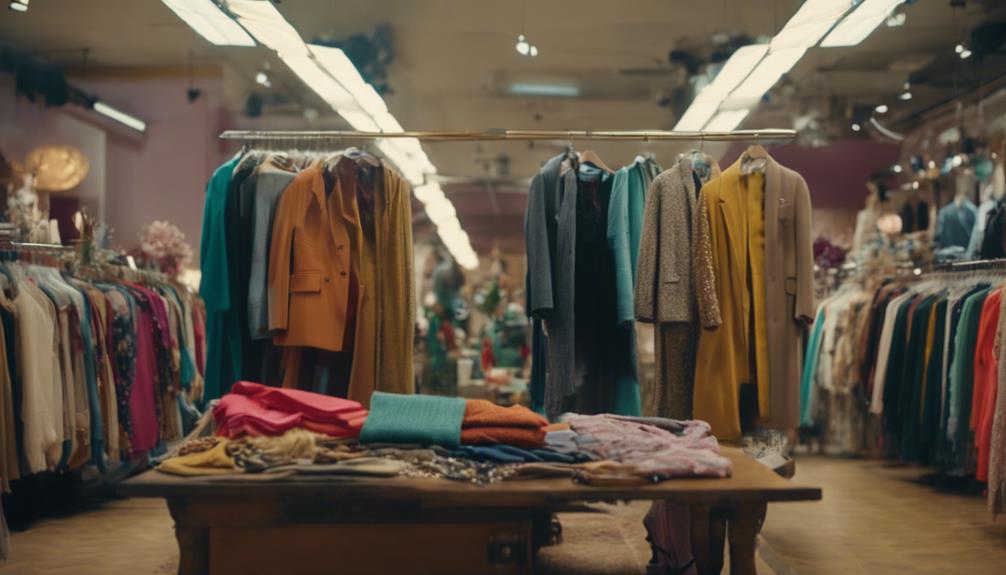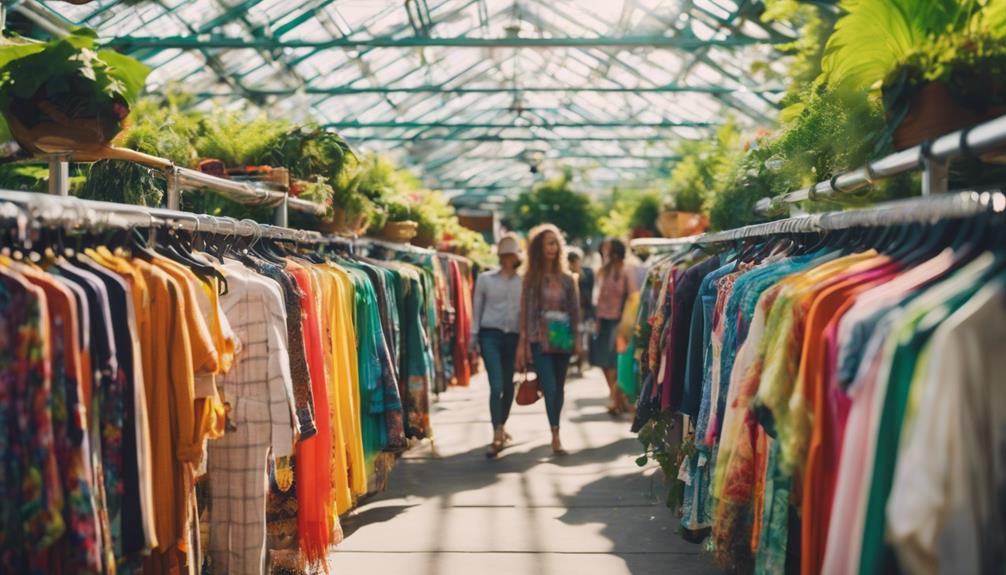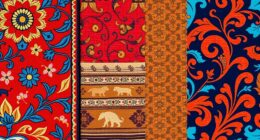Sustainable fashion can be affordable. There are many ethical brands that offer stylish, budget-friendly options. While high-quality materials may initially raise costs, investing in durable clothing can actually save you money in the long run. It is a common misconception that all sustainable fashion is expensive; mid-priced brands can have similar sourcing and manufacturing practices as more expensive ones. As demand grows, prices are likely to decrease. If you are interested in making sustainable choices without breaking the bank, there is a lot to discover about this evolving industry.
Key Takeaways
- Sustainable fashion can be affordable, with ethical brands offering budget-friendly options that do not compromise on quality.
- Investing in durable clothing reduces overall cost-per-wear, making it more economical in the long run.
- Not all high-priced items guarantee better worker conditions; mid-priced brands may have similar practices as fast fashion.
- Consumer choices can drive demand for more affordable sustainable options, leading to increased production and lower prices.
Understanding Fashion Costs
Understanding fashion costs means recognizing how our choices impact both our wallets and the environment, especially in a landscape dominated by fast fashion's low prices.
When you buy from fast-fashion brands, you're often lured by the incredibly low prices that mask the true cost of a garment. These brands thrive on producing cheap clothing, leading you to view low cost as the standard, but this comes with hidden ethical implications.
Conversely, sustainable brands prioritize quality and ethics over sheer quantity. Their garments might seem pricier upfront, often due to the higher production costs tied to ethical practices, like using organic materials. For instance, organic cotton typically costs 25% more than polyester, reflecting a commitment to sustainable practices.
However, investing in sustainable fashion can actually save you money in the long run. By choosing durable, high-quality pieces, you benefit from a lower cost-per-wear.
Understanding these nuances helps you make informed choices. While fast fashion may seem budget-friendly, the true cost to the environment and society can be considerably higher than the price tag suggests.
The Myths of Sustainable Fashion

Many people think sustainable fashion is always expensive, but affordable options exist that prioritize quality and ethical practices. Ethical brands often offer clothing that's not only stylish but also budget-friendly, proving that you don't have to break the bank to shop sustainably.
It's a common misconception that luxury fashion is more sustainable than fast fashion. In reality, high-end brands face the same environmental and ethical challenges, often contributing to significant carbon emissions during events like fashion weeks.
Additionally, many consumers believe that donating old clothes is a sustainable practice. However, most donated items end up either in landfills or shipped overseas, affecting local markets, with only about 10% sold in thrift stores.
Another myth is that pricier garments guarantee better worker conditions. The truth is, mid-priced and premium brands frequently use the same factories as fast fashion, perpetuating low labor costs across the board.
Economic Factors at Play

Consumer spending habits have dramatically shifted over the decades, impacting the dynamics of both fast fashion and sustainable brands in today's market. In 1960, American households spent over 10% of their income on clothing, but that figure has plummeted to just 3.5% today. This decline coincides with a rise in consumption, as the average person now purchases around 70 garments annually, mainly from fast-fashion retailers.
Fast-fashion brands often enjoy profit margins exceeding 10%, while sustainable brands, which prioritize ethical fashion and fair wages, struggle to compete at similar price points. The financial risks these ethical brands face, like unsold inventory, put them at a disadvantage. Meanwhile, fast-fashion companies can absorb losses, allowing them to offer lower prices to consumers.
However, investing in quality clothing from sustainable brands can yield long-term savings. Although the upfront cost may be higher, the durability and timelessness of these pieces often make them a smarter choice over time.
As demand for sustainable fashion grows, it's possible that price points will decrease, making these ethical options more accessible to everyone.
The Role of Consumer Behavior

Your choices as a shopper play a crucial role in shaping the demand for sustainable fashion, reflecting a growing awareness of ethical and environmental issues.
As you explore your options, it's important to reflect on how your consumer behavior impacts the market. While many of you may desire sustainable brands, the perception that ethical fashion is too expensive often leads to a preference for fast-fashion brands. These brands cleverly market low prices, which can distort your sense of value and encourage overconsumption.
However, shifting your habits can make a significant difference. When you prioritize responsible purchasing, like opting for second-hand items or participating in clothing swaps, you help reduce overall fashion waste and lessen environmental impacts.
Research indicates that once you understand the true costs associated with fast fashion—such as environmental degradation and labor exploitation—you're more likely to support sustainable brands, even if the upfront costs are higher.
Future Trends in Affordability

As the demand for sustainable fashion continues to rise, ethical brands are likely to ramp up production, which could lead to more affordable options for shoppers. With increased production, these brands can benefit from economies of scale, potentially lowering prices.
As you shift towards a more conscious wardrobe, keep in mind that the average clothing purchases have surged remarkably, highlighting a growing trend for sustainable choices. Many sustainable brands currently produce in smaller quantities to avoid overproduction, which can make initial costs higher. However, as awareness and demand grow, you'll likely see prices decrease.
Investing in quality clothing from these brands often proves more cost-effective over time, as durable items provide a lower cost per wear compared to fast fashion. Emerging business models like renting, swapping, and second-hand purchasing are also making sustainable fashion more accessible. These options increase affordability and cater to a broader audience.
Ultimately, as sustainable brands adapt to consumer preferences, you can expect a positive shift in affordability, making ethical fashion choices easier for everyone. Embracing this trend means you can shop sustainably without breaking the bank.
Frequently Asked Questions
Does Sustainable Fashion Have to Be Expensive?
Sustainable fashion doesn't have to be expensive. You can find affordable ethical brands and practices like thrifting or swapping clothes. By exploring these options, you can embrace sustainability without breaking the bank.
Is Sustainable Fashion for the Rich?
Sustainable fashion isn't just for the rich; it's accessible for everyone. By exploring affordable ethical brands, shopping second-hand, or swapping clothes, you can embrace sustainability without breaking the bank.
What Is the Problem With Sustainable Fashion?
Sustainable fashion's like a beautiful garden choked by weeds; while brands flaunt green initiatives, they often ignore overproduction and labor injustices. You're left sifting through greenwashing, struggling to find genuine commitment amidst the chaos.
What Is the Paradox of Sustainable Fashion?
You'll find the paradox of sustainable fashion lies in the perception of high costs versus the reality of ethical production. While it may seem expensive, ethical practices often lead to better long-term value for you.
Is Sustainable Fashion Affordable, According to Research Results?
The research results on sustainable fashion effectiveness shocking results show that it is possible for sustainable fashion to be affordable. Contrary to popular belief, the cost of sustainable fashion items can be comparable to traditional fast fashion. This challenges the notion that sustainability comes with a hefty price tag.
Conclusion
In the grand tapestry of fashion, sustainable choices don't have to be woven with gold threads. You can find quality pieces that don't break the bank, proving that eco-consciousness and affordability can coexist.
Picture a vibrant market where style and sustainability dance hand in hand, inviting everyone to join in.
As you embrace this shift, you're not just changing your wardrobe; you're helping to rewrite the story of fashion for a brighter, more inclusive future.









